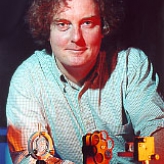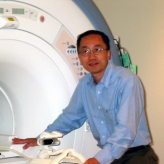Nanoscience & Nanotechnology
Nanotechnology is to understand and control matters at dimensions smaller than 100 nanometers. At this dimension, the physical, chemical, and biological properties of materials differ significantly from the properties of bulk matter, where unique phenomena enable novel applications. Research in nanotechnology involves fabricating/synthesizing, characterizing, modeling, and manipulating matter at this nanometer scale. Nanotechnology is a rich, dynamic, and expanding research area in the Department of Physics and Astronomy. Current research activities include nanomaterial fabrication/synthesis, nano-optics, nano-magnet, spintronic, chemical and biology sensing, renewable energy applications, medical imaging, disease treatment and drug delivery.
Researchers
Nanomaterials
- Fabrication of nanostructures using a unique glancing angle deposition
- Exploration of structures and applications in plasmonics and metamaterials
- Synthesis of novel oxide materials for renewable energy applications
- Synthesis of various kinds of nanomaterials, including nanowires and graphene, using precisely controlled tube furnaces system
- Synthesis of persistent luminescent nanoparticles using sol-gel and hydrothermal methods
- Applications of nanomaterials in biomedical imaging and nano-optics
- Organic spintronic device fabrication and characterization
- Time-resolved spectroscopic techniques for the characterization of ultrafast dynamical process in nanomaterials
Nanoscale Interactions
Electromagnetic surface waves are coupled excitations of photons and mobile charge carriers in metals, 2D/3D doped semiconductors. Similar electromagnetic fields exist also on polar materials and 2D vdW structures in the so-called reststrahlen region and are called surface phonon polaritons (SPhPs), which are collective modes that arise from coupling of photons with optical phonons in polar crystals. Both SPPs and SPhPs propagate along the interface and decay in the direction perpendicular to the surface. These surface waves display a rich palette of scientifically significant properties that promise novel applications in integrated circuits, sensors, synthetic life-like systems, solar cells, nanophotonics, energy transfer, coherent control of the lattice and surface waves, ultramicroscopy, superlensing, and metamaterials.
We investigate the nanoscale interaction of quasiparticles and polaritons in 2D materials with phase change systems; and plan to demonstrate unprecedented nanoscale control of surface waves by implementing hybrid phase change-plasmonic/phononic 2D material design coupled with direct real space nanoscale spectroscopic imaging. We characterize and fundamentally understand the coupled interactions and transmission of a nanoscale detected phenomena (phase change) to a microscopically propagating wave front in hybrid 2D-phase change material systems.
Nanoscopy of Low-Dimensional Materials
Single- and few-layer two-dimensional (2D) materials (nanolayer materials) and heterostructures exhibit striking quasiparticle properties and many-body interaction effects that offer exciting hunting ground for new physics. Quantum confinement and symmetry breaking that accompany reduced dimensionality in nanolayer materials give rise to emergent surface states with unique properties such as topologically protected surface states and other exotic surface states. The emergence of unexpected and often spectacular physical phenomena arises from the spatial distribution and dynamics of charge carriers on the surface, and localized interaction with photons, defects and external fields that can affect the qualitative features of many-body systems. A direct spatial nanoscale investigation of these surface states and a detailed understanding of their interactions with other systems is the goal of this research.
Surfaces and Interfaces
The Dennis group uses a variety of computer simulation techniques to investigate the interaction of electromagnetic radiation on nanomaterials and metamaterials. With Dr. Yiping Zhao we have recently initiated a new effort to simulate the deposition of nanostructured materials.
Recent Publications
Multiple virus detection
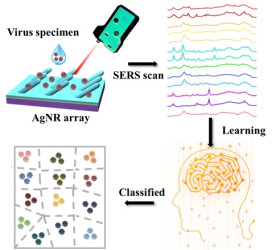
Yanjun Yang, Beibei Xu, Jackelyn Murray, James Haverstick, Xianyan Chen, Ralph A. Tripp, and Yiping Zhao, “Rapid and quantitative detection of respiratory viruses using surface-enhanced Raman spectroscopy and machine learning,” Biosensors and Bioelectronics 217, 114721 (2022).
Plasmonic coupling
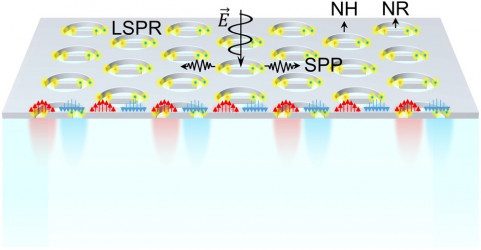
Wang Yanfeng, Shen Ao, Fei Yang, Zhengjun Zhang, Zhengjun, and Yiping Zhao, “Coupling between Surface Plasmon Modes of Single-Layer Complex Silver Nanohole Array and Enhancing Index Sensing,” ACS Applied Nano Materials 5, 9761 - 9770 (2022).
Differentiation and classification of bacterial endotoxins
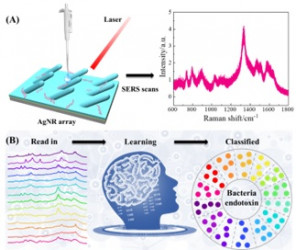
Yanjun Yang, Beibei Xu, James Haverstick, Nabil Ibtehaz, Artur Muszyński, Xianyan Chen, Muhammad E. H. Chowdhury, Susu M. Zughaier, and Yiping Zhao, “Differentiation and classification of bacterial endotoxins based on surface enhanced Raman scattering and advanced machine learning,” Nanoscale 14, 8806-8817 (2022).
Born-Kuhn model
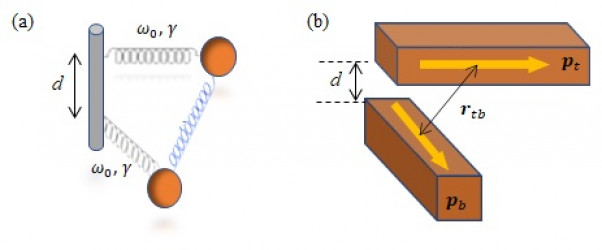
Nima Karimitari, Bin Ai, and Yiping Zhao, “A Comparison Study of the Born-Kuhn Model and the Finite-Difference-Time-Domain Calculations on Stacked Plasmonic Nanorods,” J. Phys. D: Appl. Phys. 55, 325104 (2022).




